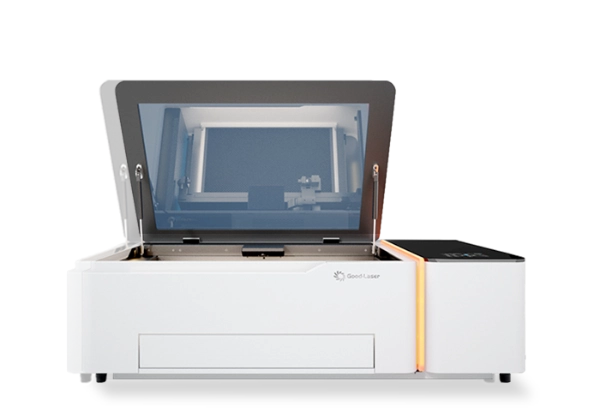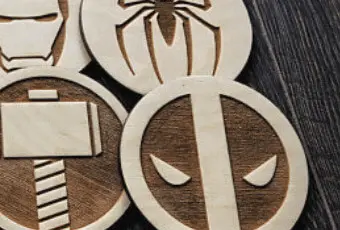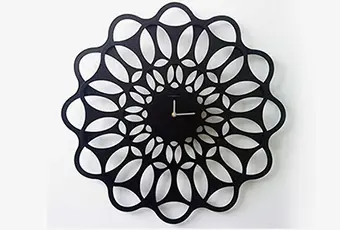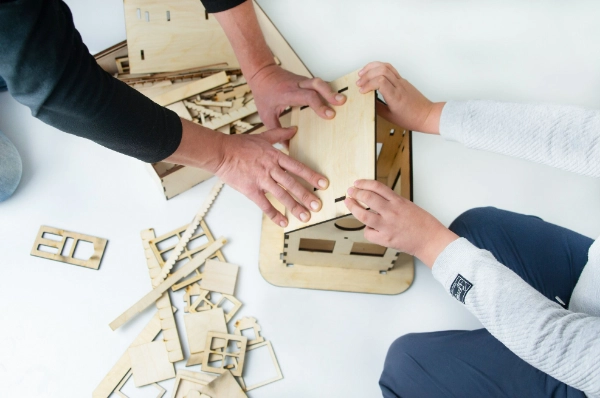DIY CO2 Laser Cutting Machine for Wood Engraving: Precautions and Considerations
Laser cutting and engraving machines have become indispensable in various industries due to their precision and efficiency. In this blog post, Good-Laser will share the precautions for DIY CO2 laser cutting machine for wood engraving to ensure the health of the operator and the integrity of the working environment.
Understanding CO2 Lasers
CO2 lasers are gas lasers that use carbon dioxide as the active medium. They operate in the infrared spectrum, typically around 10,600nm, which is ideal for cutting and engraving materials like wood, acrylic, and certain plastics. The high power density of a CO2 laser allows for precise cutting and engraving, but it also means that safety precautions are crucial.
Safety Precautions
Protective Equipment
1. Eye Protection: CO2 lasers can cause permanent eye damage. Always wear laser safety goggles that are rated for the specific wavelength of your laser.
2. Skin Protection: Lasers can cause burns. Use long sleeves, gloves, and aprons made from flame-resistant materials.
3. Ventilation: CO2 lasers produce fumes when cutting or engraving certain materials. Ensure proper ventilation to avoid inhaling these fumes.
Laser Safety Measures
1. Enclosure: Build an enclosure for your laser cutter to contain the laser beam and protect from accidental exposure.
2. Emergency Stop: Install an easily accessible emergency stop button to shut down the laser immediately in case of an emergency.
3. Beam Stops: Use beam stops at the end of your cutting path to prevent the laser from reflecting back into the laser tube, which can cause damage.

Technical Considerations
Laser Power
The power of your CO2 laser will determine the depth and quality of your engraving. For wood, a laser with a power of 40-60 watts is typically sufficient for most engraving tasks.
Focus and Speed
1. Focus: The focus of the laser must be precise to achieve the desired depth and clarity of the engraving. A misaligned focus can result in a shallow or blurry engraving.
2. Speed: The speed at which the laser moves across the material can affect the quality of the engraving. Too fast, and the engraving may be too shallow; too slow, and it may burn the material.
Material Handling
1. Stability: Ensure the wood is securely fastened to a stable surface to prevent movement during the engraving process.
2. Moisture Content: Wood with high moisture content can cause the laser to smoke more and may affect the quality of the engraving. It's best to use kiln-dried wood.
Software and Design
1. Vector Graphics: For engraving, use vector graphics rather than raster images to ensure clean, sharp lines.
2. Software: Use software that can interpret vector graphics and control the laser cutter, such as CorelDraw or Adobe Illustrator.
Maintenance and Troubleshooting
1. Laser Tube: Regularly check the laser tube for any signs of wear or damage. Replace it when necessary.
2. Reflective Optics: Clean the reflective optics regularly to maintain optimal laser performance.
3. Fans and Cooling Systems: Ensure that all cooling systems are functioning properly to prevent overheating.


Technical Details
- Laser Power and Speed: Adjust the laser power and speed according to the type and thickness of the wood. Softer woods like pine may require lower power settings, while harder woods like oak need higher settings. The speed of the laser beam also affects the engraving depth and edge quality .
- Focus and Beam Alignment: Ensure the laser beam is focused correctly on the material to achieve precise cuts and prevent unnecessary energy dispersion.
- Auxiliary Gas Selection: The choice of assist gas, such as oxygen or nitrogen, can affect the quality of the cut and the safety of the operation.




